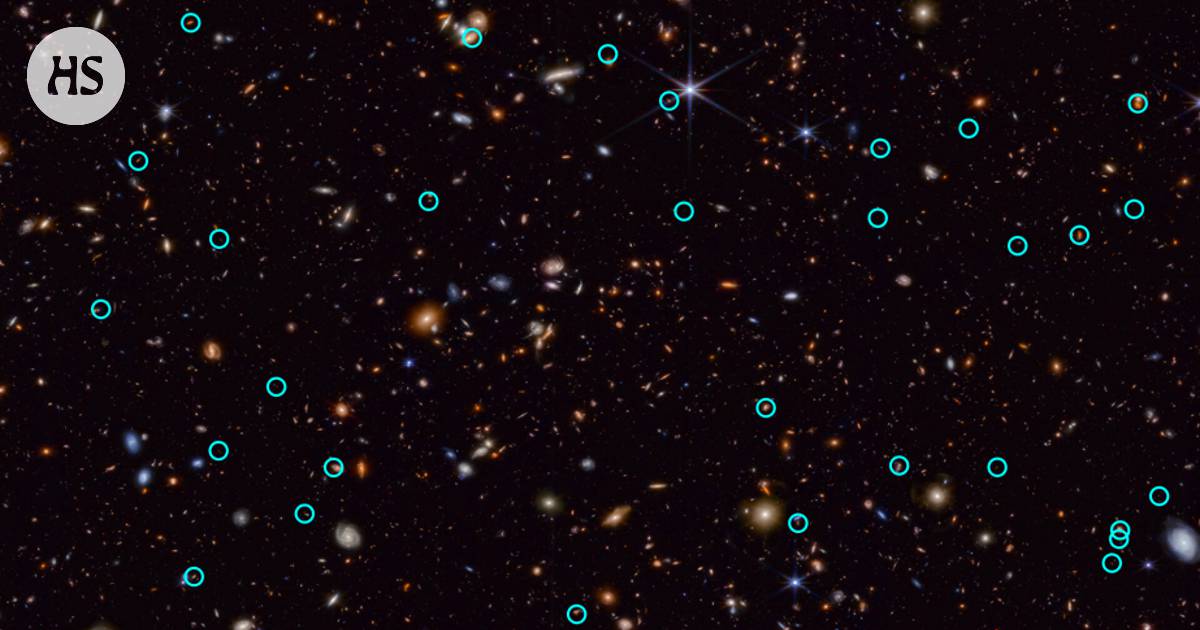The Webb Space Telescope found ten times as many distant supernovae as compared to previous observations
The summary is made by artificial intelligence and checked by a human.
The James Webb space telescope has discovered many new supernovae in the early universe.
Webb also discovered possibly the most distant supernova known.
A supernova is a large star that explodes. Its remains spread into space.
Astronomers found a total of 79 new supernovae by comparing image pairs.
Space telescope James Webb has discovered an abundance of supernovae from the early universe.
In this way, the number of known distant supernovae has increased more than tenfold, they say Webb’s website.
Webb has also discovered the most distant known supernova.
SUpernova is a big star that explodes. Its remains spread into space.
It will be visible to telescopes as a bright object for a few weeks.
Sometimes rarely, maybe once in a lifetime, one can also see one with the naked eye.
ASTRONOMERS found one pair of images by comparing a total of 79 new supernovae.
The researchers compared two images of the same place in space. The second picture was taken in 2022, the second in 2023.
“The surface area of the image is very small in space. If you took a grain of rice in your hand and held it at arm’s length, the area of the image would be the size of that grain”, compare Christa DeCoursey from the University of Arizona in Webb’s bulletin.
He presented his group’s search for supernovae at the American Astronomical Society meeting in June in Wisconsin.
“We spend over a hundred hours of Webb time on each image. These are images taken from very, very far away in deep space.”
Research is published on the Arxiv pre-publication service. It has not yet been peer reviewed.
Pictures was also compared to previous Hubble Space Telescope images of the same area.
In the comparison, they were able to find bright spots that were present in one image, but not in the others.
Spots found are stars that shine relatively dimly in the images.
At the end of their life cycle, however, they have exploded as bright supernovae. Then their luminosity slowly began to fade.
Several of the discovered supernovae are in the running for the most distant supernova ever discovered. Not all calculated distances have been confirmed yet.
One supernova, for example, exploded when the universe was only about 1.8 billion years old.
The most distant light since the Big Bang has traveled through space for about 13.8 billion years.
NASA’s Hubble telescope has imaged several supernova remnants. In the picture, the nebula known as the Veil Nebula.
The early ones supernovae produce heavy elements when they explode. Now those elements have spread around the universe.
Some of them have ended up as stardust in our own solar system and also as building materials for the Earth.
Ancient supernovae have fewer heavy elements than supernovae that have exploded closer to modern times.
The most famous supernovia on SN 1987A, which was observed in February 1987. It exploded about 168,000 light years from Earth.
Since then, scientists have followed with interest how the remnants of the supernova spread into space.
“The universe had a different composition a long time ago,” says the astronomer Justin Pierel In New Scientist.
Space telescope James Webb, better known as Webb, has opened a new window into space, especially deep space.
Webb is harnessed to search for thermal radiation from deep space. The radiation comes from early stars and galaxies.
It has been photographing space for about two years these days. Experts say Webb has at least 20 years ahead of him if all goes well.
Wherever Webb’s mirrors are pointed, it has always revealed more detailed images than before and a lot of new ones.
The new findings may help reveal what the universe’s first stars and galaxies were like.
